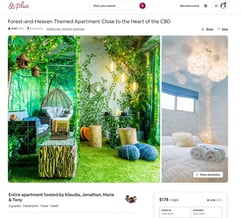The courtship between humans and alcohol has been going on for thousands of years, seemingly getting stronger with each passing century. In the modern world, there was always an abundance of alcohol anywhere you looked - from which establishment you should patron, knowing what companies exist across beer, wine, and spirits, where you could purchase libations, and why you have an affinity and loyalty toward particular brands.
As the COVID-19 pandemic struck two trends in the spirits and marketing industries occurred—according to Nielsen Data there was a 55% increase in spirit sales and, according to eMarketer, visual content consumed on social media is going up by an average 7-minutes compared to the original forecast. Keeping those numbers in mind and the restrictions with going to bars, wineries, and breweries, companies are looking at ways to bridge the gap from in-person engagement to almost entirely digital. One way your brand can achieve this is by creating easily shareable, organic, visual content such as drink recipes, how-to tutorials with tips and tricks, and food-pairing guides as part of your campaigns.
As mentioned with nearly all social activities moving online, visual content, and, in particular, video, is one of the key ways those of you in the business of booze can continue to showcase your brand’s libations. According to Hubspot Marketing, 80% of video marketers claim that video has directly increased sales. Another benefit of leveraging digital advertising channels and video is the reach of your audiences while having less restrictive advertising guidelines.
The internet, even with regulations, is a great place for alcohol companies to entice audiences with appealing shots that cover a wide range of marketing initiatives. Here are a few types of visual content you can produce today to boost your business:
- Make sure to have consistent product-focused content. Consistency includes scaling across all channels for brand governance, visibility purposes, and regularly publishing. This allows you to continuously be visible to your target audience and remind people of the tangible product they, the consumer, purchases. Smirnoff did a recent campaign featuring Laverne Cox for its new seltzer product featuring a Fourth of July centric theme to tie-in to the recent holiday that felt true to the brand.
- Think of your audience first. One way to have the messaging resonate with your audience is to localize the content. Whether it’s using visual content that speaks to a specific geographic audience or social group, this adds a level of personalization to the buying and brand experience. A great example of this is Kronenbourg 1664 Blanc Beer and their shoots in Paris, France, done using StudioNow.
- Tell your brand’s story. Another way to gain new consumers, as well as continued customer loyalty, is by people trusting your brand, knowing who you are and what you stand for as a company. In particular, Visual content strikes a chord by creating a sense of authenticity and connection, as well as creating the lifestyle experience that only your brand can offer. A wonderful example of this is Moët Hennessy’s Sabre Sundays Event, a step-by-step video tutorial detailing how to safely open a champagne bottle with a sabre, featuring Veuve Clicquot drinkers actually doing it with the featured product. This creates an experience and lifestyle for your customer while continuing to tell your story.
A strong visual identity, like many of the spirit companies, across all marketing channels, is only going to get more valuable and important for brands. The company that consistently creates visual content to support the products, audience, and brand identity are ahead of the curve. Any marketing team can take notes from alcohol brands on how to produce strong visual content that understands why the audience finds them appealing.
 Visual Production Platform
Visual Production Platform



